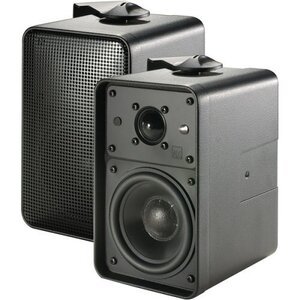E-prime reimport statview and spss text file: Mastering Innovative Data Integration Techniques
In the world of data analysis, mastering tools and techniques is crucial for producing accurate and insightful results. For many data analysts, research professionals, and statisticians, understanding how to effectively use software like E-Prime, StatView, and SPSS is essential. This blog post will guide you through the process of e-prime reimport statview and spss text file integration, providing you with valuable insights and practical tips to streamline your data analysis workflow.
Introduction to E-Prime, StatView, and SPSS
E-Prime is a suite of applications used for designing and conducting psychological experiments. It allows researchers to create complex experimental designs with ease. StatView, on the other hand, is a statistical analysis software that simplifies the process of data manipulation and analysis. SPSS (Statistical Package for the Social Sciences) is a powerful tool widely used for statistical analysis in social science research.
Understanding the interplay between these three tools—e-prime reimport statview and spss text file—can significantly enhance your data analysis capabilities. By integrating these tools, you can streamline the process of importing, analyzing, and interpreting data, ultimately leading to more efficient and accurate research outcomes.
Why Integration Matters
Integrating e-prime reimport statview and spss text file is essential for researchers and data analysts who want to make the most out of their data. This integration allows for seamless data transfer between different software applications, reducing the risk of errors and ensuring consistency in data analysis. With e-prime reimport statview and spss text file integration, you can efficiently manage large datasets, perform sophisticated analyses, and generate comprehensive reports.
Furthermore, integration simplifies the workflow, saving time and effort. Researchers no longer need to manually transfer data between different software applications, which can be time-consuming and prone to errors. Instead, e-prime reimport statview and spss text file integration automates the process, allowing researchers to focus on analysis and interpretation.
Setting Up Your Tools
Before you can begin integrating e-prime reimport statview and spss text file, you need to ensure that you have the necessary software installed and configured. Start by installing E-Prime, StatView, and SPSS on your computer. Each software has its installation guidelines, so refer to the respective user manuals for detailed instructions.
Once installed, you’ll need to familiarize yourself with the basic functionalities of each tool. Understanding how to create and manage experiments in E-Prime, perform statistical analyses in StatView, and manipulate data in SPSS is essential for successful integration. Spend some time exploring the features and functionalities of each application to build a solid foundation.
Preparing Your Data
The first step in e-prime reimport statview and spss text file integration is to prepare your data. This involves exporting data from E-Prime and ensuring that it is in a format compatible with StatView and SPSS. E-Prime typically generates data in text file format, which can be easily imported into StatView and SPSS for further analysis.
To export data from E-Prime, follow these steps:
- Open your E-Prime experiment and run it to collect data.
- Once the experiment is complete, save the data file in text format.
- Ensure that the data is properly structured, with variables clearly defined and organized.
Proper data preparation is critical for successful integration. Ensure that your data is clean, well-organized, and free from errors or inconsistencies. This will facilitate smooth import into StatView and SPSS, allowing for accurate and reliable analysis.
Importing Data into StatView
Once your data is prepared, the next step in e-prime reimport statview and spss text file integration is to import the data into StatView. StatView offers a straightforward process for importing text files, making it easy to analyze E-Prime data.
To import data into StatView, follow these steps:
- Open StatView and create a new project.
- Select the option to import data and choose the text file generated by E-Prime.
- Map the variables in the text file to the corresponding variables in StatView.
StatView will automatically import the data, allowing you to perform statistical analyses and generate visualizations. The simplicity of this process highlights the importance of e-prime reimport statview and spss text file integration, as it enables seamless data transfer and analysis.
Analyzing Data in StatView
With your data successfully imported into StatView, you can begin the analysis process. StatView provides a range of statistical tools and techniques to help you analyze your data effectively. From basic descriptive statistics to advanced inferential analyses, StatView offers comprehensive functionality to meet your research needs.
Start by exploring the descriptive statistics options in StatView. These tools allow you to summarize your data, identify trends, and gain valuable insights. Next, move on to inferential statistics, where you can test hypotheses, compare groups, and assess relationships between variables.
The ability to perform detailed analyses in StatView underscores the value of e-prime reimport statview and spss text file integration. By leveraging the power of StatView, you can extract meaningful information from your E-Prime data, enhancing the overall quality of your research.
Exporting Data from StatView
After completing your analysis in StatView, the next step in e-prime reimport statview and spss text file integration is to export the analyzed data. This allows you to transfer the results to SPSS for further manipulation and reporting.
To export data from StatView, follow these steps:
- Open your StatView project and select the option to export data.
- Choose the desired format for the exported file (e.g., text file).
- Save the exported file to your computer.
By exporting data in a compatible format, you ensure that it can be easily imported into SPSS. This seamless transfer of data highlights the efficiency and convenience of e-prime reimport statview and spss text file integration.
Importing Data into SPSS
With your data exported from StatView, you can now import it into SPSS for further analysis. SPSS offers robust data manipulation and statistical analysis capabilities, making it an ideal tool for advanced research.
To import data into SPSS, follow these steps:
- Open SPSS and create a new dataset.
- Select the option to import data and choose the file exported from StatView.
- Map the variables in the imported file to the corresponding variables in SPSS.
SPSS will automatically import the data, allowing you to leverage its powerful statistical tools for in-depth analysis. The ease of this process exemplifies the benefits of e-prime reimport statview and spss text file integration, as it enables a smooth transition between different software applications.
Advanced Analysis in SPSS
Once your data is imported into SPSS, you can take advantage of its advanced statistical analysis capabilities. SPSS offers a wide range of techniques, including regression analysis, factor analysis, and cluster analysis, to help you uncover complex relationships and patterns in your data.
Start by exploring the various analysis options available in SPSS. Perform regression analysis to identify predictors of key outcomes, use factor analysis to reduce dimensionality and identify underlying structures, and employ cluster analysis to group similar cases for deeper insights.
The ability to conduct advanced analyses in SPSS further emphasizes the importance of e-prime reimport statview and spss text file integration. By utilizing SPSS’s sophisticated tools, you can gain deeper insights into your data, ultimately enhancing the quality and impact of your research.
Generating Reports in SPSS
With your analysis complete, the final step in e-prime reimport statview and spss text file integration is to generate comprehensive reports. SPSS offers powerful reporting capabilities, allowing you to present your findings clearly and effectively.
To generate reports in SPSS, follow these steps:
- Open your SPSS dataset and select the option to generate reports.
- Choose the desired format for your report (e.g., PDF, Word).
- Customize the report to include relevant tables, graphs, and statistical outputs.
By generating detailed reports, you can effectively communicate your research findings to stakeholders, clients, and colleagues. The ability to seamlessly integrate e-prime reimport statview and spss text file underscores the efficiency and effectiveness of this approach.
Benefits of Automation
One of the key advantages of e-prime reimport statview and spss text file integration is automation. Automation minimizes manual intervention, reducing the risk of errors and improving overall efficiency. By automating data transfer and analysis tasks, researchers can focus on high-value activities, such as interpretation and decision-making.
Automation also enhances consistency and reproducibility. By standardizing data transfer processes, researchers can ensure that analyses are conducted consistently, leading to more reliable and valid results. The integration of e-prime reimport statview and spss text file exemplifies the power of automation in modern research workflows.
Best Practices for Integration
To maximize the benefits of e-prime reimport statview and spss text file integration, it is essential to follow best practices. Start by ensuring that your data is clean, well-organized, and free from errors. This will facilitate smooth data transfer and accurate analysis.
Next, invest time in learning the functionalities of each tool. Understanding the strengths and limitations of E-Prime, StatView, and SPSS will help you make informed decisions and leverage their capabilities effectively. Additionally, document your workflow and maintain detailed records of data transfer and analysis processes. This will enhance transparency and reproducibility, ensuring that your research meets the highest standards of quality.
Overcoming Challenges
While e-prime reimport statview and spss text file integration offers numerous benefits, it is not without challenges. One common challenge is compatibility issues between different software applications. To address this, ensure that your data is exported in a compatible format and that variables are properly mapped during import.
Another challenge is the learning curve associated with each tool. Take the time to explore tutorials, user manuals, and online resources to build your proficiency. Collaborate with colleagues and seek support from the user community to overcome any difficulties you may encounter.
By proactively addressing these challenges, you can successfully integrate e-prime reimport statview and spss text file into your research workflow, unlocking the full potential of these powerful tools.
Conclusion
In the realm of data analysis, integrating e-prime reimport statview and spss text file is a game-changer. This integration streamlines the process of importing, analyzing, and reporting data, leading to more efficient and accurate research outcomes. By following best practices and leveraging the capabilities of E-Prime, StatView, and SPSS, researchers and data analysts can enhance the quality and impact of their work.
Ready to take your data analysis to the next level? Start by mastering e-prime reimport statview and spss text file integration and unlock the full potential of your research. Whether you’re a seasoned professional or just starting, this integration will revolutionize the way you approach data analysis.














Post Comment